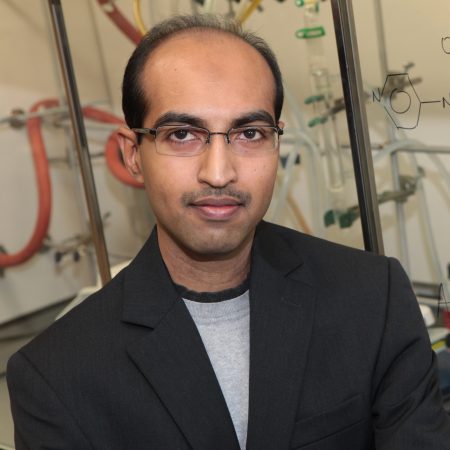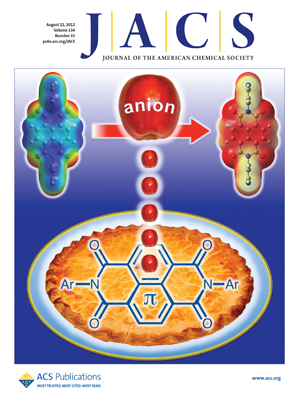
A Florida State University chemist’s work could lead to big improvements in our ability to detect and eliminate specific toxic substances in our environment.
Featured on the cover of the prestigious Journal of the American Chemical Society (JACS), Sourav Saha’s specialized work to strip electrons from the toxic chemical known as fluoride is producing a variety of unique results.
“I started out with the very basic premise of trying to find new ways to detect toxic fluoride in solutions,” said Saha, an assistant professor of chemistry at Florida State. “As I got further into that work I was able to create a compound that could actually strip the electrons right off the molecule, producing a variety of tangible benefits such as toxin detection and removal.”
Saha’s initial fluoride-detection work led to a $100,000 grant from the Petroleum Research Foundation to further explore the possibilities of his research. Using that money, he was able to bring in additional expertise and build his “fluoride-robbing” compound that is the central feature of the work featured on the JACS cover.
“This work is very exciting and novel because the results are surprising,” said Timothy Logan, chairman of the Department of Chemistry and Biochemistry at Florida State. “Molecules always have affinity for electrons, with some molecules having a greater affinity than others. Flouride has the highest electron affinity of all, so the ability to strip off electrons from fluoride, especially in the presence of other molecules with lower electron affinity, is truly unique.”
Although Saha is excited about the possibilities of his new compound in toxin cleanup, he sees a huge variety of potential applications for his research.

“I think toxin removal is one of the most obvious and relatable benefits my work could lead to, but in reality, there are many additional implications this work could have on daily life,” Saha said. “For instance, we could develop this research to create all new types of plastics that could exhibit unique qualities, or improve the effectiveness of devices, such as batteries, that are used to store and transfer energy.”
To read more about Saha’s work in the JACS, visit http://pubs.acs.org/doi/abs/10.1021/ja303173n. To learn more about Saha, visit http://www.chem.fsu.edu/bio.php?id=838.
For more information, contact Tom Butler of University Communications at (850) 644-8634 or tbutler@admin.fsu.edu.




